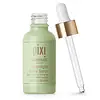What's inside
What's inside
 Key Ingredients
Key Ingredients

 Benefits
Benefits

 Concerns
Concerns

 Ingredients Side-by-side
Ingredients Side-by-side

Water
Skin ConditioningGlycerin
HumectantAcacia Seyal Gum Extract
HumectantRetinol
Skin ConditioningMethyl Methacrylate/Glycol Dimethacrylate Crosspolymer
Acetyl Heptapeptide-4
HumectantNiacinamide
SmoothingRosmarinus Officinalis Extract
AntimicrobialCitrus Nobilis Peel Extract
MaskingAscorbic Acid
AntioxidantTocopheryl Acetate
AntioxidantCitric Acid
BufferingCarbomer
Emulsion StabilisingPotassium Sorbate
PreservativeHydroxyethylcellulose
Emulsion StabilisingCaprylyl Glycol
EmollientDisodium EDTA
Propyl Gallate
AntioxidantBHT
AntioxidantWater, Glycerin, Acacia Seyal Gum Extract, Retinol, Methyl Methacrylate/Glycol Dimethacrylate Crosspolymer, Acetyl Heptapeptide-4, Niacinamide, Rosmarinus Officinalis Extract, Citrus Nobilis Peel Extract, Ascorbic Acid, Tocopheryl Acetate, Citric Acid, Carbomer, Potassium Sorbate, Hydroxyethylcellulose, Caprylyl Glycol, Disodium EDTA, Propyl Gallate, BHT
Water
Skin ConditioningGlycerin
HumectantGlycolic Acid
BufferingPolysorbate 20
EmulsifyingHydroxyethylcellulose
Emulsion StabilisingAmmonium Hydroxide
BufferingPhenoxyethanol
PreservativePropylene Glycol
HumectantEthylhexylglycerin
Skin ConditioningAloe Barbadensis Leaf Extract
EmollientCucumis Sativus Fruit Extract
EmollientArginine
MaskingDisodium EDTA
Tocopheryl Acetate
AntioxidantRetinyl Palmitate
Skin ConditioningAscorbyl Palmitate
AntioxidantLecithin
EmollientSucrose
HumectantHydrogenated Lecithin
EmulsifyingCaprylic/Capric Triglyceride
MaskingCyclopentasiloxane
EmollientBHT
AntioxidantCyclohexasiloxane
EmollientXanthan Gum
EmulsifyingAscorbic Acid
AntioxidantWater, Glycerin, Glycolic Acid, Polysorbate 20, Hydroxyethylcellulose, Ammonium Hydroxide, Phenoxyethanol, Propylene Glycol, Ethylhexylglycerin, Aloe Barbadensis Leaf Extract, Cucumis Sativus Fruit Extract, Arginine, Disodium EDTA, Tocopheryl Acetate, Retinyl Palmitate, Ascorbyl Palmitate, Lecithin, Sucrose, Hydrogenated Lecithin, Caprylic/Capric Triglyceride, Cyclopentasiloxane, BHT, Cyclohexasiloxane, Xanthan Gum, Ascorbic Acid
Ingredients Explained
These ingredients are found in both products.
Ingredients higher up in an ingredient list are typically present in a larger amount.
Ascorbic Acid is is pure Vitamin C. This form makes up the largest amount of vitamin C found naturally in our skin.
Not only is vitamin C great for your overall health and immune system, it also has plenty of benefits on your skin.
Vitamin C is best used for brightening skin. It improves dark spots, acne scars, and hyperpigmentation. This is because it blocks the process of skin darkening when exposed to UV.
Remember: Vitamin C should not replace sunscreen!
Your skin uses vitamin C to build collagen. Collagen is one key component in having a strong skin barrier and plump skin. Vitamin C also plays a role in regulating collagen, thus making it effective in improving wrinkles and fine lines.
Ascorbic acid shows potent antioxidant activity. As an antioxidant, it helps fight free-radicals. Free-radicals are molecules that may damage your skin cells. These antioxidants also protect skin against UV damage.
The best formulations include Vitamin E and/or ferulic acid. These two ingredients help stabilize and provide a boost in the benefits of ascorbic acid. This is because ascorbic acid becomes unstable when exposed to UV and air. In fact, you can tell your ascorbic acid has oxidized when it turns an orange-yellow color.
Ascorbic acid is generally compatible with other ingredients. However, using ascorbic acid with other active ingredients might cause irritation. Two ingredients: copper ions and benzoyl peroxide, will inactivate ascorbic acid completely.
Read more about other types of Vitamin C:
Foods rich with vitamin C include oranges, strawberries, broccoli, bell peppers, and more. When consuming Vitamin C, your skin receives a portion of the nutrients.
Learn more about Ascorbic AcidBHT is a synthetic antioxidant and preservative.
As an antioxidant, it helps your body fight off free-radicals. Free-radicals are molecules that may damage your skin cells.
As a preservative, it is used to stabilize products and prevent them from degrading. Specifically, BHT prevents degradation from oxidation.
The concerns related to BHT come from oral studies; this ingredient is currently allowed for use by both the FDA and EU.
However, it was recently restricted for use in the UK as of April 2024.
Learn more about BHTDisodium EDTA plays a role in making products more stable by aiding other preservatives.
It is a chelating agent, meaning it neutralizes metal ions that may be found in a product.
Disodium EDTA is a salt of edetic acid and is found to be safe in cosmetic ingredients.
Learn more about Disodium EDTAGlycerin is already naturally found in your skin. It helps moisturize and protect your skin.
A study from 2016 found glycerin to be more effective as a humectant than AHAs and hyaluronic acid.
As a humectant, it helps the skin stay hydrated by pulling moisture to your skin. The low molecular weight of glycerin allows it to pull moisture into the deeper layers of your skin.
Hydrated skin improves your skin barrier; Your skin barrier helps protect against irritants and bacteria.
Glycerin has also been found to have antimicrobial and antiviral properties. Due to these properties, glycerin is often used in wound and burn treatments.
In cosmetics, glycerin is usually derived from plants such as soybean or palm. However, it can also be sourced from animals, such as tallow or animal fat.
This ingredient is organic, colorless, odorless, and non-toxic.
Glycerin is the name for this ingredient in American English. British English uses Glycerol/Glycerine.
Learn more about GlycerinHydroxyethylcellulose is used to improve the texture of products. It is created from a chemical reaction involving ethylene oxide and alkali-cellulose. Cellulose is a sugar found in plant cell walls and help give plants structure.
This ingredient helps stabilize products by preventing ingredients from separating. It can also help thicken the texture of a product.
This ingredient can also be found in pill medicines to help our bodies digest other ingredients.
Learn more about HydroxyethylcelluloseTocopheryl Acetate is AKA Vitamin E. It is an antioxidant and protects your skin from free radicals. Free radicals damage the skin by breaking down collagen.
One study found using Tocopheryl Acetate with Vitamin C decreased the number of sunburned cells.
Tocopheryl Acetate is commonly found in both skincare and dietary supplements.
Learn more about Tocopheryl AcetateWater. It's the most common cosmetic ingredient of all. You'll usually see it at the top of ingredient lists, meaning that it makes up the largest part of the product.
So why is it so popular? Water most often acts as a solvent - this means that it helps dissolve other ingredients into the formulation.
You'll also recognize water as that liquid we all need to stay alive. If you see this, drink a glass of water. Stay hydrated!
Learn more about Water